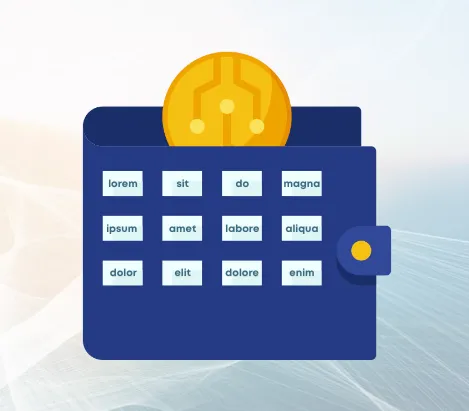
Why Have a Plan?
Your digital assets should be treated like any other personal property when estate planning, and it is important that you take steps to include them in your Will. However, the assets will only be available to your heirs if you have developed a plan. That plan should include detailed instructions for them about what you have and how to access it.
Where Do I Start?
Before diving into inheritance planning, make sure you have a solid understanding of cryptocurrencies. Use trusted sources, such as C4, to familiarize yourself with the basics of blockchain technology, private keys, wallets, and the specific cryptocurrencies you hold. This knowledge will empower you to make informed decisions and communicate effectively with your beneficiaries.
Start Simple:
Although it may seem overwhelming, start with a simple pen and paper to create an inventory of your assets. There are templates available online that can be printed off, filled out, and stored in a safety deposit box or in a secure location in your home.
You can also to explore the growing number of cryptocurrency estate planning tools and services available. These tools can assist you in securely storing and transferring your digital assets.
They often offer features such as multi-signature wallets, time-locked transactions, and contingency plans for managing your cryptocurrencies in specific circumstances.
Pamela Morgan’s book “CryptoAsset Inheritance Planning: A Simple Guide for Owners”, has templates to help get you started and offers additional guidance as you develop your plan. (Disclosure: Pamela is a board member at C4.)
Regardless of where or how you start, we urge you to use the knowledge provided in this article to further educate yourself with the plan and options that best suit your needs and situation. Unlike other assets, there is no ‘Bank Manager’ and not having a plan could almost certainly guarantee some or all of your crypto assets may be lost when you’re gone.
In general, a balance of both legal and technical assistance will help ensure your assets can be properly passed down to your loved ones, while still keeping them secure.
Here are some general best practices to get you started with a simple inventory to help with the creation of your cryptocurrency inheritance plan.
Inventory Planning:
Start by creating an inventory of all your cryptocurrency holdings. Include information such as the name of the cryptocurrency, wallet addresses, private keys, and any relevant account information. Keep this inventory updated as you acquire or sell cryptocurrencies. You may also want to include information relating to:
- Exchanges — Write down the exchanges you are currently using or have used in the past. Do not list your password or login credentials at this stage.
- Wallets — If you use a wallet hosted by an exchange, note which wallet is connected to which exchange in the step above. If you are holding your own keys, then your heirs should be made aware of at least two things: Name(s) of the wallets you use and where your wallet backups are located. Remember, anyone who has access to these backups could steal the funds. Be aware of this when considering anyone that may be assisting you or has access to your plan.
- Devices — List the devices that you are using to access your wallet accounts, such as your phone or laptop. This will ensure your heirs know not to throw away, donate, gift, or destroy these devices until the funds have been successfully retrieved/moved. It is good to note that you do not need to provide your passwords for these devices at this stage. A picture may also be beneficial to ensure they know the devices they are looking for (i.e., a generic photo of your hardware wallet model).
Consider Wallet Seed Storage
Your wallet seed is a combination of random words that enable you to access your cryptocurrency on the blockchain in case you lose access to your wallet. It is recommended to store your wallet seed using an element proof device, such as a steel wallet.

Don’t Overcomplicate:
In order to make sure that your loved ones understand your cryptocurrency holdings and how to access them, provide clear instructions on where to find the inventory, how to access wallets, and any necessary passwords or recovery phrases. It’s crucial to communicate your intentions and wishes regarding the distribution or management of your cryptocurrencies.
At a minimum, it is best to avoid unnecessary costs and it should not take years for your heirs to follow the ‘clues’ to uncover where your more detailed plan is stored or solve a riddle to determine where you have hidden all the diversely distributed portions of your seed.
Don’t overestimate the technical ability of your heirs.
Define Support for your Heirs:
It is recommended at minimum, your heirs know 3 main areas: Exchanges, Wallets, and Devices.
Identifying helpers/individuals your heirs can go to for assistance is a good option to avoid your inheritors going to untrusted sources, such as the Internet, for help. Identifying people who might be able to assist doesn’t mean, however, that you give them your passwords or keys. These helpers will simply be people that your beneficiary(s) can contact to help direct them with the proper asset retrieval.
Consider people you trust to help and simply list them at this stage.
As you develop your plan, it may be prudent to provide your helpers with trustworthy resources, where they can access content that focuses on helping crypto — C4’s CCE content is always a great place to start.
Take a First Step:
Ultimately, without a plan, your heirs may not be able to access or retrieve your cryptocurrency holdings. This first step should assist you in building a more comprehensive plan, especially if you’re holding a large amount of cryptocurrency. Remember, planning for distribution of your cryptocurrency assets will take time and should be included in a will, testament, or legal trust.
We recommend you also take the time to educate yourself and consult with legal and financial professionals to develop a robust and secure cryptocurrency inheritance plan.
Safeguard your crypto legacy and leave a lasting digital footprint for future generations.
This article was written by our CryptoCurrency Essentials (CCE) Committee, with special thanks to committee member Michelle Demarest.
Disclaimer
The information presented in this article is for educational and informational purposes only. It does not constitute financial advice, investment recommendations, or any form of endorsement.
The views and opinions expressed by individuals in this article are solely those of the speakers and do not necessarily represent those of C4 or any other organizations with which they are affiliated.
The mention or inclusion of any individuals, companies, or specific cryptocurrency projects in this video should not be considered as an endorsement or promotion.
Regulations and legal frameworks around cryptocurrencies may vary in different jurisdictions. It is your responsibility to comply with the applicable laws and regulations of your country or region.